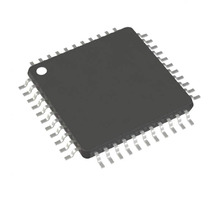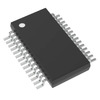Manufacturer Part Number
PIC16F1519-E/PT
Manufacturer
Microchip Technology
Introduction
8-bit microcontroller with enhanced features designed for low-power and high-performance applications
Product Features and Performance
Core Processor PIC
Core Size 8-Bit
Speed 20MHz
Connectivity options include I2C, LINbus, SPI, UART/USART
Peripherals include Brown-out Detect/Reset, Power-on Reset, PWM, Watchdog Timer
36 I/O pins for versatile interfacing
28KB of FLASH Program Memory
RAM Size of 1K x 8 for variable storage
Internal Oscillator for system clock
Product Advantages
Low-power consumption due to PIC XLP technology
High integration of features saves additional component costs
Large number of I/Os for complex tasks
Extended temperature range for industrial applications
Key Technical Parameters
Program Memory Size 28KB (16K x 14)
Voltage Supply Range 2.3V to 5.5V
Analog to Digital Converters A/D 28x10b
Operating Temperature from -40°C to 125°C
Quality and Safety Features
Builtin Brown-out Detect/Reset ensures proper operation under low voltage conditions
Watchdog Timer for system reliability and recovery
Compatibility
Surface Mount 44-TQFP (10x10) package compatible with standard PCB manufacturing processes
Compatible with various Microchip development tools for programming and development
Application Areas
Industrial control systems
Automotive applications
Consumer electronics
Internet of Things (IoT) devices
Battery powered devices
Product Lifecycle
Active product with ongoing manufacturer support
Not reported as nearing discontinuation
Replacements or upgrades may be available in the PIC microcontroller product range
Several Key Reasons to Choose This Product
Low-power operation extends battery life in portable applications
Versatile connectivity options facilitate communication with a wide range of devices
High-temperature tolerance expands usage in harsh environments
Significant program and RAM memory size for complex and demanding applications
Integrated features reduce the need for additional components, minimizing design complexity




 PIC16F15213-I/MFMicrochip TechnologyIC MCU 8BIT 3.5KB FLASH 8DFN
PIC16F15213-I/MFMicrochip TechnologyIC MCU 8BIT 3.5KB FLASH 8DFN PIC16F1518T-I/SSMicrochip TechnologyIC MCU 8BIT 28KB FLASH 28SSOP
PIC16F1518T-I/SSMicrochip TechnologyIC MCU 8BIT 28KB FLASH 28SSOP PIC16F1518T-I/MLMicrochip TechnologyIC MCU 8BIT 28KB FLASH 28QFN
PIC16F1518T-I/MLMicrochip TechnologyIC MCU 8BIT 28KB FLASH 28QFN